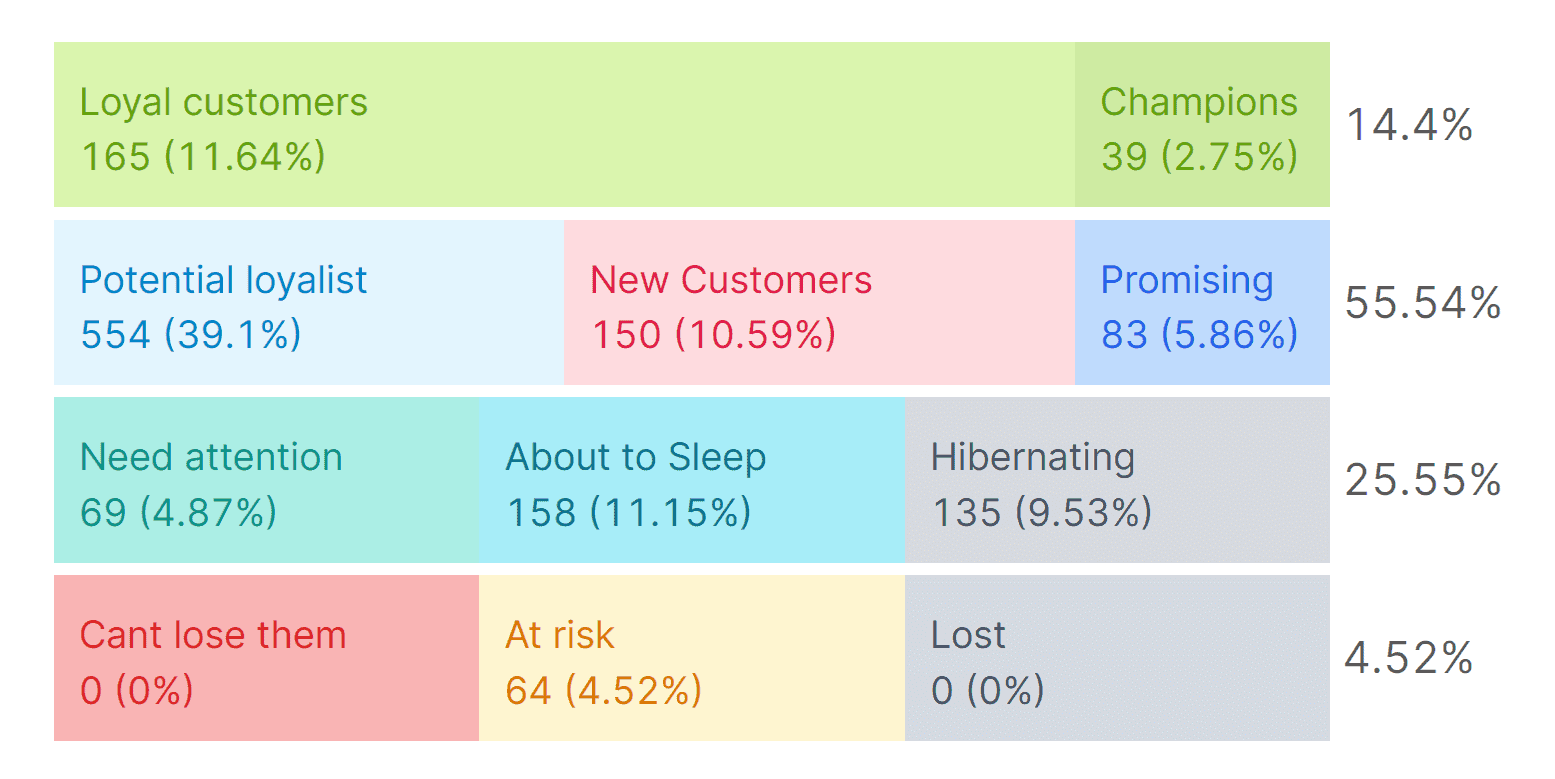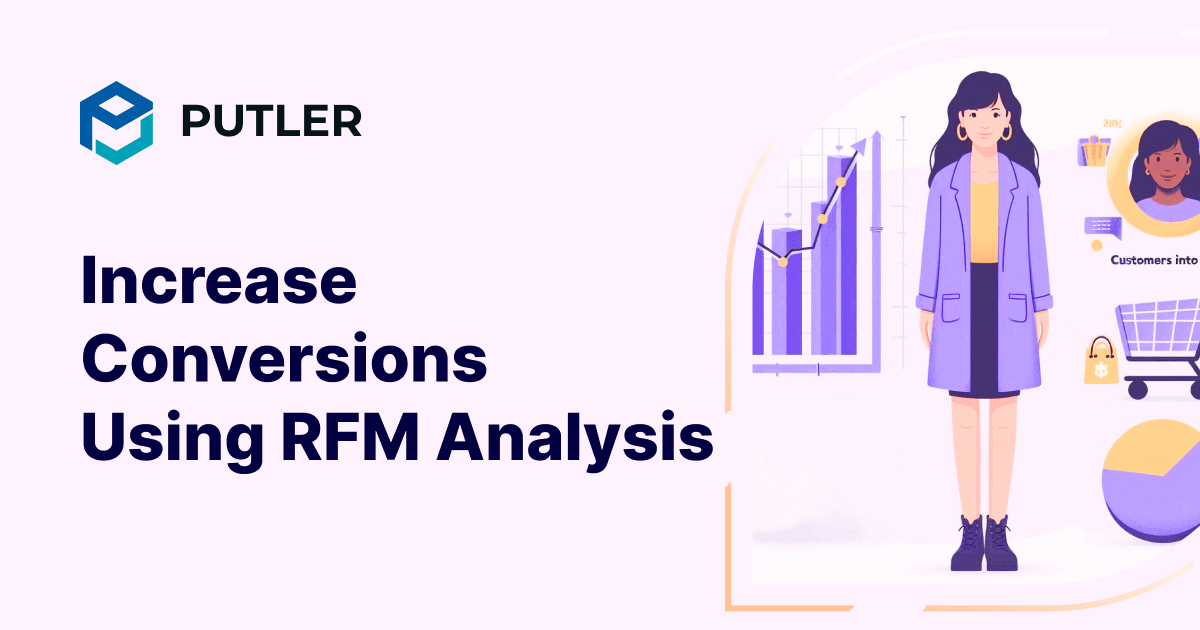Are your marketing campaigns missing the mark? Struggling to identify which customers need attention? RFM Analysis is your solution.
This data-driven approach analyzes customer behavior through three simple metrics: Recency (last purchase), Frequency (how often they buy), and Monetary value (how much they spend).
Ready to see how this actually works in the real world? Let’s break it down.
How RFM analysis for Customer Segmentation works
RFM analysis works like a customer scoring system. Think of an e-commerce store selling shoes. Each customer gets three scores:
- Recency: Sarah bought yesterday (5/5), while Mike hasn’t purchased in 6 months (1/5).
- Frequency: Sarah makes monthly purchases (5/5), Mike has bought twice (2/5).
- Monetary: Sarah’s average order is $200 (4/5), Mike spends $100 (2/5).
These scores help identify different customer segments:
- Champions (High R-F-M): Like Sarah, who frequently buys and spends well.
- Loyal Customers (Medium R, High F-M): Regular buyers who stick around.
- At-Risk (Low R, High F-M): Previously good customers who’ve gone quiet.
- Potential Champions (High R-M, Low F): New customers who spend big.
- Churning (Low R-F-M): Like Mike, who might need re-engagement.
Leveraging RFM to increase conversion rate:
Here’s where things get exciting – let’s turn these insights into actual results with strategies that works.
- Champions: Reward their loyalty with exclusive early access and VIP benefits. This keeps them engaged and turns them into brand advocates.
- At-Risk customers: Send personalized win-back offers based on their past purchases. A simple “We miss you + 20% off your favorite items” can reactivate these accounts.
- Potential champions: Focus on their first-month experience. Welcome series, product education, and targeted recommendations convert them into regular buyers.
- Churning customers: Quick intervention with surveys and special offers can save these relationships before they’re lost.
Customer insights in action:
- Track which products drive repeat purchases.
- Identify price points that convert best.
- Predict inventory needs based on customer segments.
- Find cross-selling opportunities between product categories.
- Optimize email timing based on customer purchase history.
Making RFM analysis actionable with real data
When dealing with hundreds or thousands of customers, manual RFM analysis becomes impractical. This is where automated tools become essential.
Putler simplifies this by automatically organizing your customers into 11 distinct segments through its interactive RFM graph.

Instant Access to Customer Segments
With just a click on any segment of the RFM graph, you instantly see the precise list of customers in that category:
- Click on “Champions” to see your most valuable, frequent buyers.
- Check “Loyal Customers” to identify your steady repeat purchasers.
- View “Potential Loyalists” who could become regular customers.
- Monitor “New Customers” who’ve just started their journey.
- Track “Promising” customers showing early positive signs.
- Identify who “Needs Attention” before they drift away.
- Spot customers who are “About to Sleep” and need re-engagement.
- Check “Hibernating” customers requiring wake-up campaigns.
- Focus on “Can’t Lose Them” customers who need retention efforts.
- Address “At Risk” customers before they leave.
- Review “Lost” customers to prevent future churn.
This instant access to segmented customer lists makes it easy to take immediate action and create targeted campaigns for each group. Here’s a deeper look into RFM analysis.
The Takeaway
Stop shooting in the dark with your marketing efforts. RFM analysis gives you a clear picture of who your customers are and what they need.
With tools like Putler that automate the heavy lifting, you can focus on what matters most – creating campaigns that connect with your customers and drive sales.
